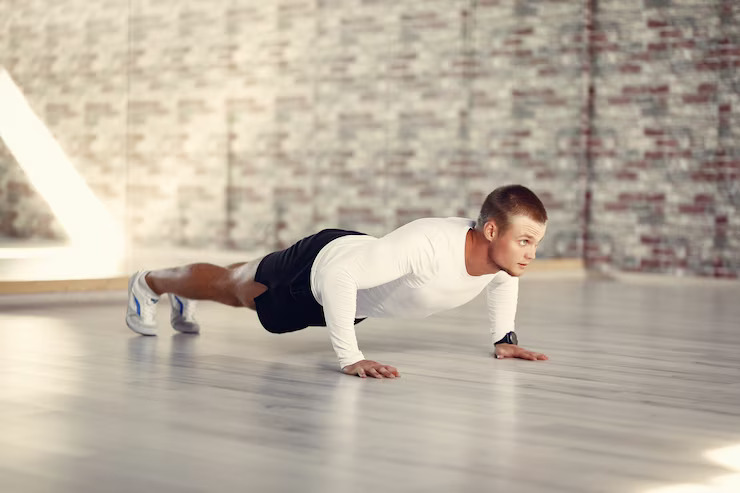Introduction:
When it comes to building upper body strength and endurance, push-ups are considered one of the most effective exercises. A push-up is a simple yet powerful bodyweight movement that engages multiple muscle groups simultaneously. While the chest, triceps, and shoulders all play integral roles in executing a push-up, the debate regarding which muscle group is the most utilized in this exercise remains ongoing. In this blog post, we will delve into the mechanics of a push-up and shed light on which muscle truly takes center stage.

Understanding the Push-Up:
Before we determine the primary muscle involved in a push-up, it is essential to grasp the mechanics of the exercise. In a standard push-up, you begin in a plank position with your hands placed slightly wider than shoulder-width apart, fingers pointing forward. As you lower your body towards the ground, you engage your chest, triceps, and shoulders, maintaining a straight line from head to heels. Then, by pushing against the ground, you raise your body back to the starting position.
Role of the Chest (Pectoralis Major):
The pectoralis major, commonly known as the chest muscle, is a powerful group responsible for the horizontal adduction of the arms. During a push-up, the chest muscles activate to bring your arms closer to the midline of your body, as well as to stabilize the movement. As you lower your body towards the ground, the pectoralis major contracts eccentrically, controlling the descent. During the push back up, the chest muscles concentrically contract, propelling the body upwards.
Significance of the Triceps:
Situated at the back of the upper arm, the triceps brachii is a three-headed muscle responsible for elbow extension. While the chest muscles primarily contribute to the pushing motion, the triceps play a crucial role in the execution of a push-up. As you lower your body towards the ground, the triceps eccentrically contract to control the descent and provide stability. During the ascent, they concentrically contract to extend the elbows and assist in pushing the body back up.
Involvement of the Shoulders (Deltoids):
The deltoid muscles, or shoulders, encompass three distinct heads: anterior, medial, and posterior. These muscles contribute to the abduction, flexion, and extension of the arms. In a push-up, the anterior deltoids, located at the front of the shoulders, play a significant role. They assist the chest and triceps in bringing the arms closer to the midline and stabilizing the movement. The medial and posterior deltoids also engage to a lesser extent, supporting the overall shoulder girdle stability.
The Most Engaged Muscle: The Conclusion:
While all three muscle groups—chest, triceps, and shoulders—contribute significantly to the push-up, it is challenging to pinpoint a single muscle as the absolute primary mover. The push-up is a compound exercise that recruits multiple muscles simultaneously, emphasizing the importance of synergy among these groups. The level of involvement may vary depending on an individual’s anatomical structure, technique, and strength.
Therefore, rather than focusing solely on isolating a specific muscle, it is more beneficial to recognize the holistic nature of the push-up. By performing this exercise correctly and consistently, you can develop overall upper body strength, endurance, and stability.
Conclusion:
In the realm of push-ups, it is important to view the exercise as a harmonious symphony of muscle groups working together rather than a competition among individual components. The chest, triceps, and shoulders all play vital roles in executing a proper push-up. By incorporating this exercise into your fitness routine, you can reap the benefits of improved upper body strength, muscle development, and functional fitness. Remember, balance and coordination among these muscle groups are key to unlocking your full potential in the push-up and beyond.